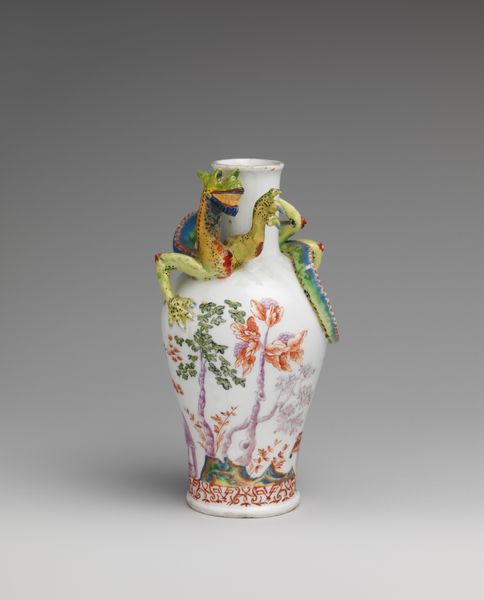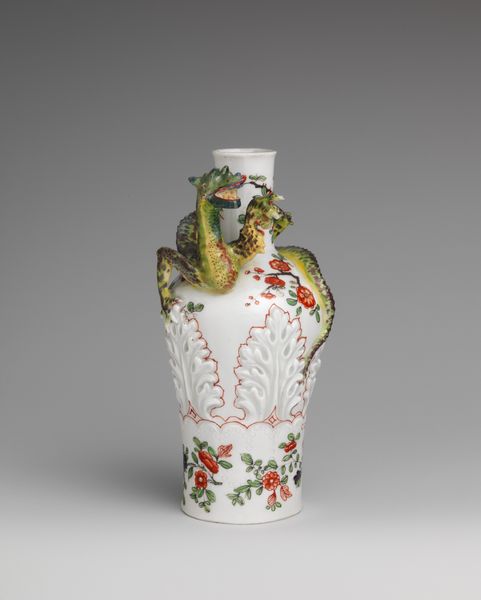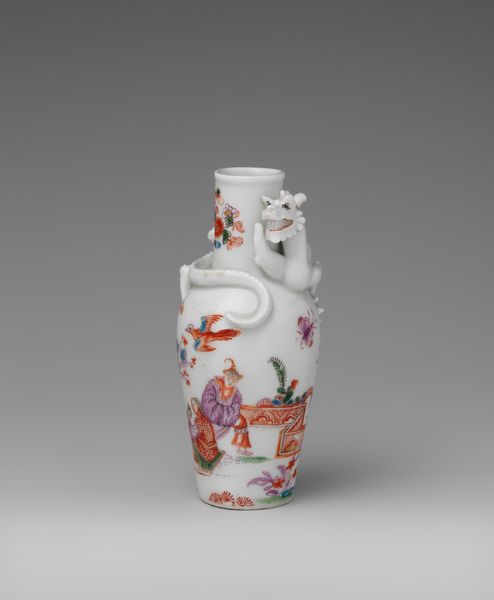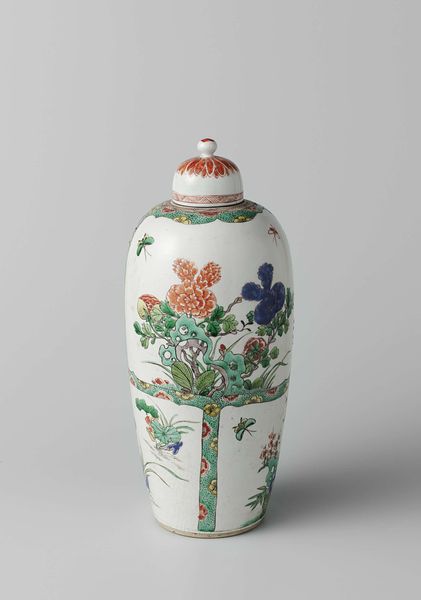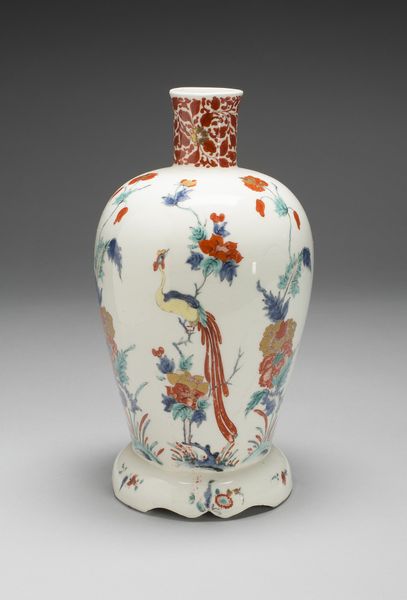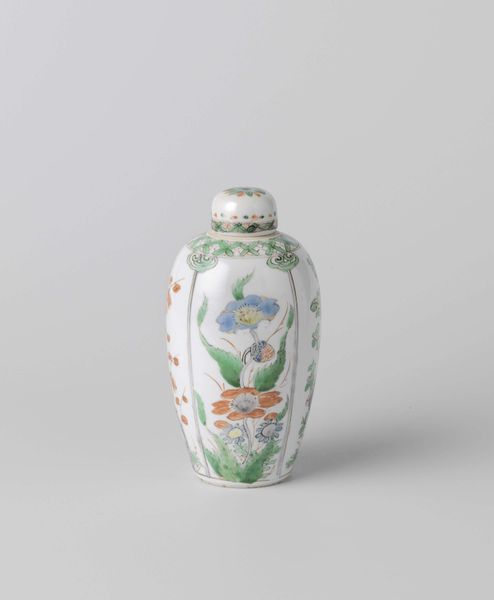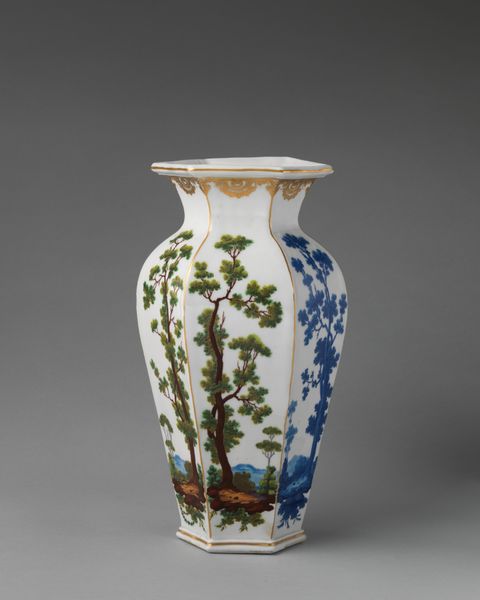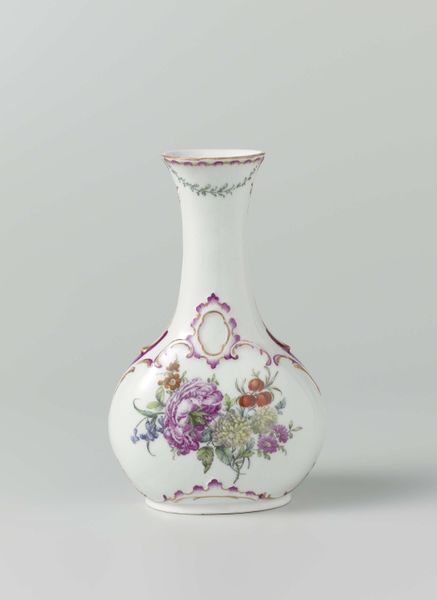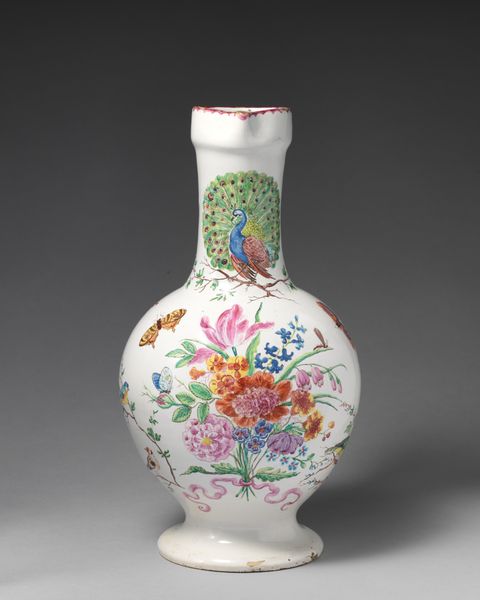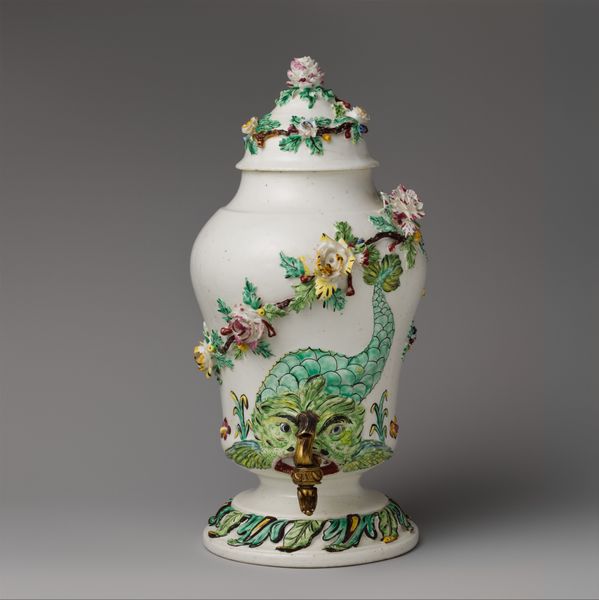
ceramic, porcelain, sculpture
#
asian-art
#
ceramic
#
porcelain
#
sculpture
#
decorative-art
#
rococo
Dimensions: Height: 5 in. (12.7 cm)
Copyright: Public Domain
Curator: Welcome. Here we have a porcelain vase, likely one of a pair, crafted between 1725 and 1745. It resides here at the Metropolitan Museum of Art. The piece offers a fascinating look into the decorative arts. Editor: My eye is immediately drawn to the vibrant colors and the striking three-dimensional dragon. It almost feels as though the dragon is emerging from the vase itself. The porcelain gives a delicate, almost ethereal quality. Curator: Indeed. The application of Rococo design to porcelain created opportunities for wealthy European patronage to participate in global trade that shaped social practices. The style emerged during an era defined by elite desire for refined aesthetics. Owning porcelain with decorative flourishes became associated with having good taste and participating in burgeoning cosmopolitan social scenes. Editor: That dragon… note the chromatic range and curvilinear grace of its tail along the surface. It contrasts beautifully with the delicate paintings on the vase itself depicting Asian scenes. Are those pagodas I see? Curator: Quite right. Such depictions were incorporated into artwork to suggest power relations between Europe and the Asian continent, but by deploying Asian iconography the producers catered to the aesthetic interests of a specific audience in order to boost social capital. Editor: The execution is just superb. And how they’ve used that bright palette—pinks, greens, blues—while maintaining a sense of harmony and balance. What a treat for the eyes. Curator: Absolutely, and this “treat” can be attributed to complex dynamics and exchanges between continents. Its aesthetic is the result of many layers of interaction with society. We can never fully appreciate it without acknowledging these many layers of social life. Editor: I agree. It’s always intriguing to reflect on the original environment these pieces would have inhabited—the homes, the gardens. What narratives it told, beyond the purely visual. Curator: Considering the social role of the aesthetic is often overlooked when regarding technique. Editor: Thanks to both perspectives, I believe we’re able to extract many narratives and insights from something as beautiful as a vase!
Comments
No comments
Be the first to comment and join the conversation on the ultimate creative platform.
